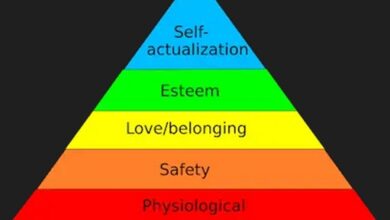Allostatic load
The human body transforms over time and the situations that each person goes through shapes its development, as an example, we have stressful moments that alter the organism. It is true that each person is different, and we cannot let it go unnoticed that adapting to changes is an essential quality in life, without which it would be impossible to recover from the malaise and frustrations of everyday life. In this article we will provide you the information about allostatic load.
More about Allostatic load
It is known as a state of the human body that manifests itself after being exposed to a stressor and that triggers a series of internal processes. In other words, if human beings cannot recover their state of equilibrium, or homeostasis, after being subjected to stress, then they are exposed to it.
Faced with this conjuncture, the organism tends to adapt to the external and internal changes that it may experience or that happen around it. Thus, when the body tries to recover from a stressful situation, but cannot because the stressor remains active, the organism gets used to living with this overload. In this way, a new state of equilibrium is generated in which the ability to withstand stress is lower .
In this sense, with the state of equilibrium altered, a stressful situation that before had little effect on the body, can provoke a much stronger reaction.
Allostatic load effects
The allostatic load manifests itself in different ways in our body. Next, we will show the main effects of allostatic load:
- Cardiovascular level : the impact of the allostatic load is reflected in the appearance of diseases that affect the heart. In turn, it can encourage the onset of heart attacks and changes in the cardiovascular system.
- Cerebral level : Allostatics can bring consequences such as chronic stress, increased cortisol levels and incoherent thoughts, among others.
- Psychological level : there are certain mental disorders that can manifest due to exposure to allostatic load. Among them, depression, anxiety disorders , certain eating difficulties and sleep disorders, among others, stand out.
When some of these effects manifest themselves, it is necessary to go to the doctor to be evaluated by a specialized health professional.
Types of allostatic load
There are different types of allostatic overload. It is important to make a precise distinction in order to be able to recognize the different problems we are dealing with in each case. For this reason, we will show you the different types of allostatic overload:
- First level of allostatic load : it appears when a stressful factor appears in a specific situation. When stress levels increase in this context, the body produces a response that can have unfavorable consequences for it.
- Second level of allostatic load : stressors remain active for a longer time. Unlike the first type, prolonged duration of stressors produces changes in the nervous system.
- Third level of allostatic load : the stressors do not stop their effects at any time, which causes the allostatic load to rise permanently. In these cases, it ends up being difficult to reduce its effects.
- Fourth level of allostatic load : arises when the body’s responses to stress are not effective. In these cases, the body tries to compensate for the lack of response by activating other sectors not linked to stress management. However, this causes even more serious physical changes.
How to reduce
As you can see, it can have harmful effects on the body. For this reason, it is essential to have methods to reduce it. In this paragraph we will explain how to reduce your allostatic load:
- Physical exercise : it has been shown that doing some physical activity reduces stress and/or anxiety levels, because chemical substances are released that relax the body.
- Psychological therapy : talking to a mental health professional about concerns that generate stress helps to lessen their effects, as possible solutions are found to deal with stressors. In this article you will find examples of psychological techniques to end stress.
- Healthy eating : the consumption of nutrients that relax the central nervous system reduces the allostatic load. In this sense, it is convenient to resort to a specialized professional to carry out a healthy diet adjusted to the needs of each person.
- Leisure activities : having time for yourself, outside of daily obligations is very beneficial for the body and mind. Habits such as reading, writing or social gatherings help to reduce allostasis.
Examples
To better understand this issue, we have compiled some examples of allostatic load:
- Dismissal from work : a man goes to his job. One day he arrives at the office and his boss informs him that he has been fired because of a reduction in staff. This situation produces a very high level of stress that the body will try to compensate in some way. However, this situation will leave a high level of allostatic load that will need to be reduced somehow to avoid health problems.
- Police work : A woman works in the police and conducts interviews with detainees on a daily basis. This type of work produces an allostatic load sustained over time, as the stress levels to which she is subjected are high for a long time. It should be noted that talking to detainees can give rise to anxiety, fear or anguish, among other symptoms.




